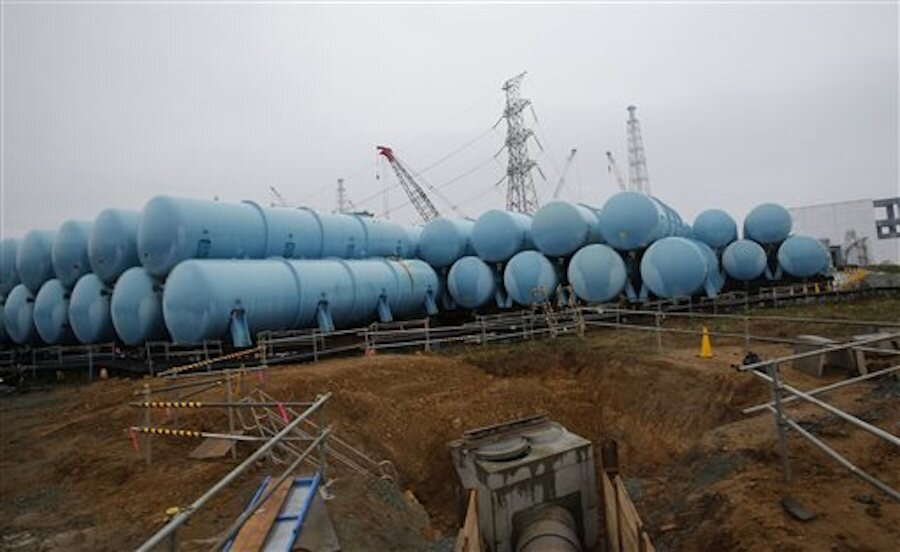Why Japan is restarting nuclear reactors, despite public outcry
Loading...
Japan has restarted its first nuclear reactor under new safety regulations, four years after a triple meltdown triggered the devastating Fukushima plant disaster.
The country shut down all 44 of its operable reactors two years ago. But after passing final safety tests in May, and spending more than $100 million on new safety systems, Kyushu Electric Power restarted the number one reactor at its Sendai plant on Tuesday morning, The Guardian reports.
Yet the past still haunts many.
According to recent polls, most of the Japanese public has turned against nuclear power since a tsunami damaged the Fukushima Daiichi plant in March 2011 and caused a release of radioactive material. High radiation levels contaminated much of the surrounding areas and forced 470,000 to evacuate their homes, many of whom have never been able to return.
Prime Minister Shinzo Abe has said Japan would only allow reactors that were approved under the "world's most stringent regulation standards” to restart. "I would like Kyushu Electric to put safety first and take utmost precautions for the restart," Mr. Abe said.
The Sendai plant reactor booted up without any problems Tuesday, said Kyushu Electric spokesman Tomomitsu Sakata. It is expected to start generating power by Friday and will reach full capacity next month.
But Abe notes that worried citizens have brought legal challenges against 25 nuclear plants that have that applied to restart, reports the BBC. Protestors gathered outside the Sendai plant and Abe's residence in Tokyo Tuesday to denounce the latest move.
"You will need to change where you evacuate to depending on the direction of the wind. The current evacuation plan is nonsense," said Shouhei Nomura, a former worker at a nuclear plant equipment maker, who now opposes atomic energy and lives in a protest camp near the plant.
“We don’t need nuclear plants,” adds former Prime Minister Naoto Kan, who was in office during the Fukushima tragedy, and had joined demonstrators outside the plant. He claims the Fukushima disaster had "exposed the myth of safe and cheap nuclear power, which turned out to be dangerous and expensive."
Yet the government says Japan is in desperate need of electricity generated by nuclear power plants. The country has had to rely on fossil fuel imports since it shut down all of its nuclear plants, causing household utility bills to rise by 20 percent. Renewing nuclear power would cut both import bills and growing CO2 emissions.
“There are very strong vested interests to reopen nuclear reactors. Accepting them as permanently closed would have financial implications that would be hard to manage,” Tomas Kaberger, chairman of the Japan Renewable Energy Foundation, told The Associated Press.
The government plans to fulfill over 20 percent of the country’s energy needs through nuclear power by 2030, despite remaining complications at the Fukushima plant. “Rather than a nuclear renaissance, much of Japan’s aging nuclear reactor fleet will never restart,” said Mamoru Sekiguchi, who campaigns against nuclear energy with Greenpeace Japan.
“Prime Minister Abe and the nuclear regulator are risking Japan’s safety for an energy source that will likely fail to provide the electricity the nation will need in the years ahead,” adds Mr. Sekiguchi.
Other skeptics point to the potential problems of restarting reactors that have been inactive for years. According to the BBC, there have been no prior attempts to restart such a large collection of dormant reactors.
Japan's Nuclear Regulation Authority announced in May that it had approved two reactors at the Sendai plant under the newer, stricter safety rules. The second reactor is scheduled to restart later this fall.






